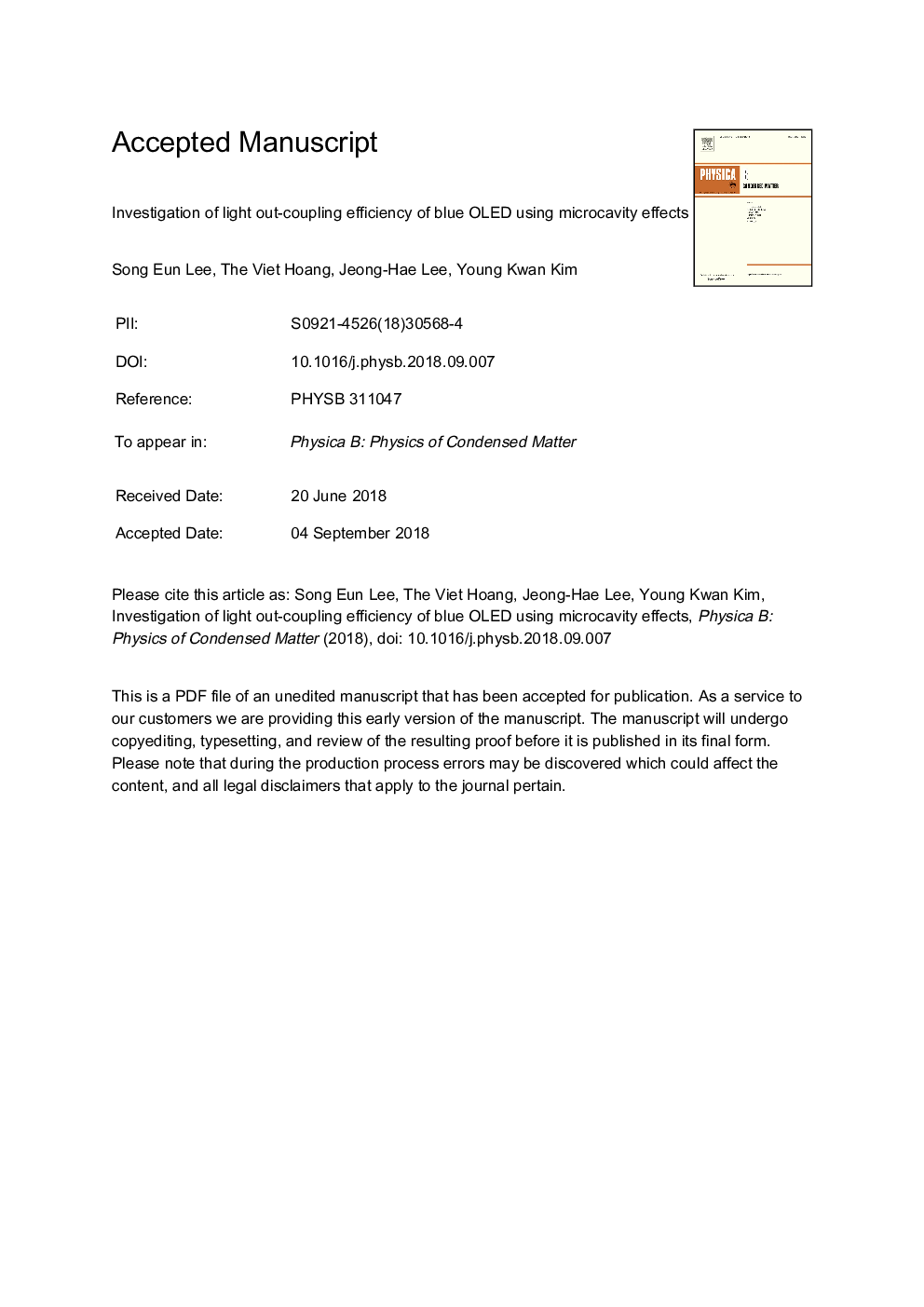| Article ID | Journal | Published Year | Pages | File Type |
|---|---|---|---|---|
| 10148016 | Physica B: Condensed Matter | 2018 | 12 Pages |
Abstract
Microcavity effect plays an important role inside organic light-emitting diodes (OLEDs) due to a strong influence on the extraction of the light of the devices. In this work, the performance of blue fluorescent OLEDs (FLOLEDs) by constructing an epsilon negative tri-metal layer (ENTML) electrode is investigated. The function of the ENTML electrode is modulating the optical properties of the device under microcavity effects. The theoretical studies and experiments to evaluate the influence of the thicknesses of ENTML electrode and organic layers on the performance of blue FLOLED are presented. It is observed that the overall tendencies of both theory and experiment show good agreement. The measured results show 3.34% in maximum external quantum efficiency and 4.21â¯cd/A in luminous efficiency. The efficiencies of the FLOLEDs is optimized using the thin organic layer thickness of 90â¯nm with the Ni/Ag/Ni 2/8/2-nm thick ENTML anode.
Related Topics
Physical Sciences and Engineering
Physics and Astronomy
Condensed Matter Physics
Authors
Song Eun Lee, The Viet Hoang, Jeong-Hae Lee, Young Kwan Kim,
